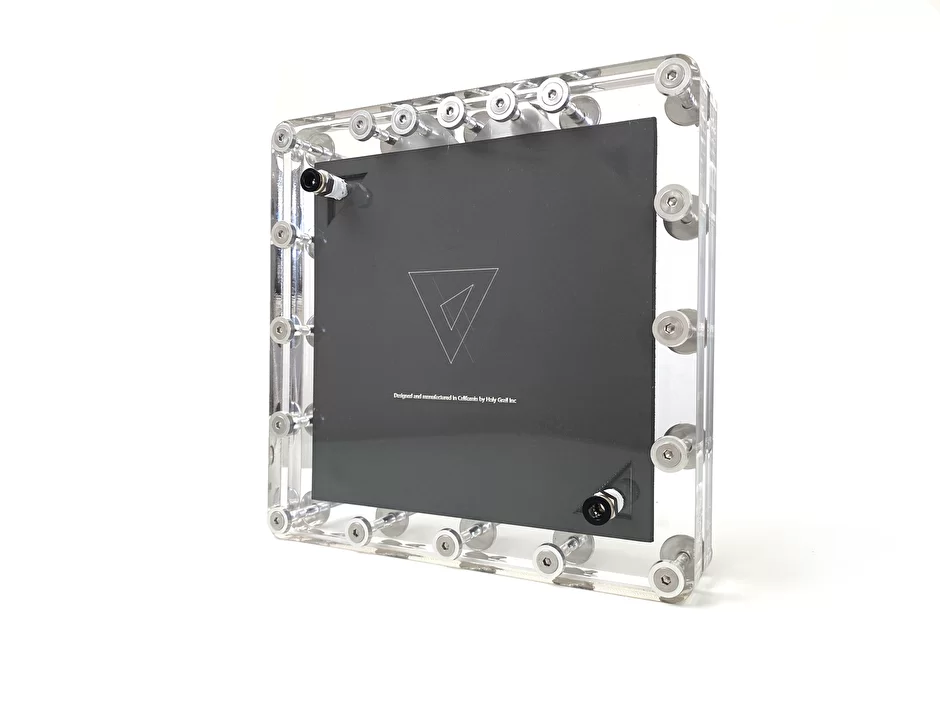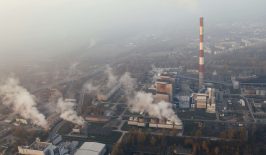When we think about removing carbon from the atmosphere, we tend to think big. Carbon sequestration is regarded as a complex operation, usually involving methods such as mass reforestation or industrial-scale solutions. Holy Grail’s concept is somewhat more modest. The company, founded in 2019 by Californian entrepreneurs David Pervan and Nuno Pereira, is working to build compact carbon capture devices which could offset some of our emissions with a piece of technology small enough to fit neatly into back gardens.
Holy Grail’s devices rely on electricity, rather than cumbersome industrial processes, for power. These devices are made with only six components and use easily manufactured materials, culminating in a relatively small environmental footprint. The devices themselves are also fully recyclable.
Importantly, these small and affordable devices are modular, meaning they can be scaled and configured to fit the needs of the consumer. If one unit is not sufficient to meet the buyer’s needs, more can be added. The startup is hoping that these devices will make carbon capture more accessible, eliminating the costs and bureaucracy associated with industrial methods.
This all sounds incredibly useful, but a key caveat is that the device remains in its prototype stage. The startup has patents pending regarding its innovative chemical processes, which are used to bind airborne carbon dioxide. Unlike with many other methods, the scrubbers will focus on the raw capture of CO2, rather than its conversion into something else, such as fuels.
The Carbon Capture Debate
The prospect of relying too heavily on carbon capture has recently come under fire, with strong arguments being made that new technologies should not be a substitute for reducing emissions and switching to renewable energies. Oxfam, for example, released a report criticising governments’ and corporations’ tendency to rely too heavily on carbon offsetting to meet their goals of net zero emissions. These are critical concerns, and the message of scientists and civil society is loud and clear: carbon sequestration can’t be treated as a catch-all.
Of particular concern is land use, with some suggesting vast amounts of land would be needed if carbon sequestration is expected to offset current fossil fuel emissions. The same Oxfam report mentioned above, claimed the total land needed for planned carbon removal projects would need to be five times the size of India – or roughly all the farmland in the world.
At the same time, new carbon capture technologies may still one day serve as powerful tools, and it’s likely that reducing excessive carbon dioxide in the atmosphere will involve a multipronged approach. Holy Grail’s unique selling point is to target smaller businesses and even individuals, in sharp contrast to the energy-intensive industrial methods that pervade the carbon capture market.
However, big questions remain, among them how companies such as Holy Grail intend to dispose of the collected carbon. The company currently plans to pick up devices when full, though the method of disposal as yet remains unclear.
However, despite being in its early stages, the product has thus far been received well: already the startup has raised 2.2 million EUR in seed funding. The company’s concept involves envisioning a carbon negative future, pinpointing the year 2042 as a potential milestone.
While it doesn’t sound like Holy Grail’s devices are likely to capture CO2 on the mass scale that is needed, the startup’s offering sounds like a promising and innovative new addition to the ever-growing “clean tech” industry.









